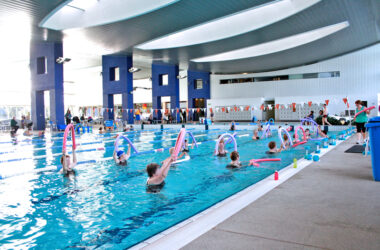Sometimes research on the tiniest things can have the biggest impact, a fact that has driven the computer industry for the last 50 years. Professor Nathaniel Quitoriano, head of the Semiconductor Nanostructures Lab in the department of mining and materials engineering at McGill, researches silicon and other semiconductor materials on the nanoscale.
“We study semiconductors—types of materials where you can control or engineer their electronic properties,” he explained. Because semiconductors can be controlled in this way, they can be used as switches or transistors. Engineers have developed techniques for grouping these switches together to build computer circuits.
Currently, all computers use semiconductor switches, and these devices rely on electricity flowing through the computer chip, which has a practical speed limit. This limit could theoretically be increased using some other method of sending signals across the computer chip, such as light. One of Quitoriano’s research projects is creating nanostructures which can create and absorb light.
“One of the problems with computer chips these days is that the signals on the chip don’t travel fast enough,” Quitoriano said. “One possible way to make it go faster is to use light on the chip … But you can’t produce light on silicon.”
Quitoriano is working on creating materials on top of silicon which can emit light, which could lead to faster computers in the future.
Quitoriano isn’t only concerned with the tiniest applications of semiconductors, though. He explained that semiconductors are also very useful for creating sensors, or devices which change their electrical properties in the presence of certain chemicals, or energy. The large surface-to-volume ratio of the semiconductor nanostructures is what makes this possible.
“You can cover the [semiconductor nanowires] with some kind of chemical that can affect their electronic properties, and by measuring a change in their resistance, you can measure the presence of some kind of chemical species,” Quitoriano said. “I think sensors are a good niche for semiconductor nanostructures.”
Because this research is so novel, the implications and results aren’t yet clear. What is clear, though, is that these nanostructores are a big deal.
“People are looking at nanostructures for a lot of applications.”
—Iain Macdonald








